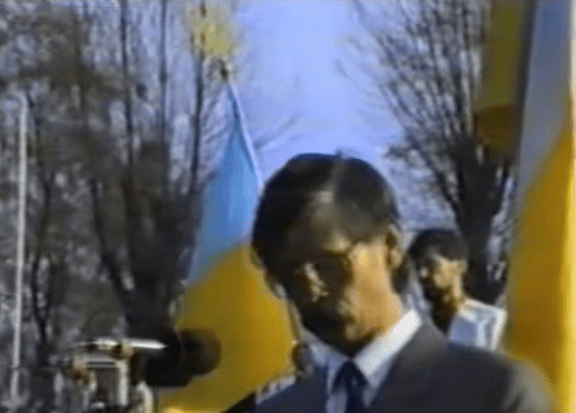One of our most challenging collections is housed at the Keston Center for Religion, Politics and Society. Containing materials related to religious persecution in Communist countries – most notably the former Soviet Union – the Keston Digital Collection features items ranging from anti-American propaganda posters to photographs, brochures, and other ephemera. It is an important and difficult collection to wrestle with given its very nature and the fact that the vast majority of items are not written in English.
But that’s not always the case. In this post, we’ll look at three new additions to the Keston Digital Collection, two of which are available in English. Recently, the Digital Preservation Services team added 88 new videos to the collection, and we offer a deeper look into one here, along with links to two more you may find of interest. We encourage you to explore the collection and take a peek behind the Iron Curtain into a world where religion, statehood, and governmental control overlap in ways both similar to and strikingly at odds with our modern Western ideas.

Metro Rides, a Renovation, and a Mystery Letter
In this video, curated under the title “Danilov Monastery Visit,” we are guided through a portion of 1989 Moscow as an unnamed and unseen narrator – a man with a British accent who also speaks fluent Russian – creates a video log of his outing from his hotel to the Danilov Monastery. The narrator addresses a group of “people back home” who are ostensibly interested in his visit to the site, which claims a 13th century founding; the purpose (we discover later) is to deliver a letter to someone he names as Sergei Seraphim Trofimov.*
The narrator uses his camera to capture his rides to the monastery and back using the Moscow metro (subway) system. He notes that “until recently” it was illegal to film on the metro, and that only in recent months would he have been able to do so without fear of reprisals. His trips on the metro are a swirl of bodies in overcoats and the traditional “ushanka” fur hats worn by generations of Russian men.
Upon his arrival at the monastery, the narrator points out several renovations and updates to the complex since his last visit. He mentions having made at least five prior trips to the monastery over the years, and this is the first time he can recall seeing the Orthodox monks roaming the grounds without a sense of tension in the air.
Eventually, the narrator finds a place to deliver his letter for Sergei – who is not at the monastery at the time of his visit – and he makes a return trip to his hotel on the metro. This time, he notes an increased interest in his actions on the part of local police, so he turns off his camera for a large portion of the trip.
The last section of the video is a 360* panning shot of the crossroads outside his hotel. The narrator repeats his well wishes to the people “back home” and makes a request for them not to use his name or the purpose behind his visit when telling others about his trip. It is a not-so-subtle reminder of the difficulties of doing business in a collapsing Soviet Union in the late 1980s – early 1990s. Just because things were beginning to change did not mean it was safe to be too conspicuous – a statement that likely remains just as applicable today.
*A quick Google search turns up numerous people under variations of the name “Sergei Trofimov.” It will remain to a more skilled and dogged researcher to try to suss out just whom our unnamed narrator was hoping to meet in the monastery on that cold February day in 1989.
View the video: Danilov Monastery Visit

“A Report on the Development of the Russian Baptists”
Commissioned and distributed by the Christian Mission to the Communist World, this 43-minute documentary details the trials and difficulties faced by Baptists in the post-revolution era in Russia. It intersperses footage of various prisoners’ stories with a service at a Russian church, which includes a performance by the parish choir.
View the video: The Bitter Cup

The People of Ukraine Assemble: Autumn 1989
Our last selection is a nearly 3-hour compilation of raw footage of “public and religious events in Lviv,” filmed during October, 1989. It includes footage of a 30,000-person meeting in support of “alternative” election law; the consecration of the first primate of the Ukrainian Autocephalous Orthodox Church Metropolitan; footage of a crowd at the Lviv Church of Saint Peter and Saint Paul; and comments by Archbishop Volodymyr Sterniuk.
View the video: Ukrainian Independence Public and Religious Events in Lviv in Autumn 1989
The videos in the Keston Digital Collection are a rich source for the study of peoples whose religious freedom has been tamped down, restricted, and sometimes completely eliminated by communist regimes. While it requires a knowledge of the Russian language to be its most useful, simply spending time viewing the images from that time and place is often sufficient to reinforce the notion that the struggle for religious liberty is long, difficult, and sometimes calls for the ultimate sacrifice.
If you would like to help us by providing translation or other cataloging-related data for the items in this collection, please email university_libraries@baylor.edu and we will put you in touch with the proper team member to facilitate your interest.
